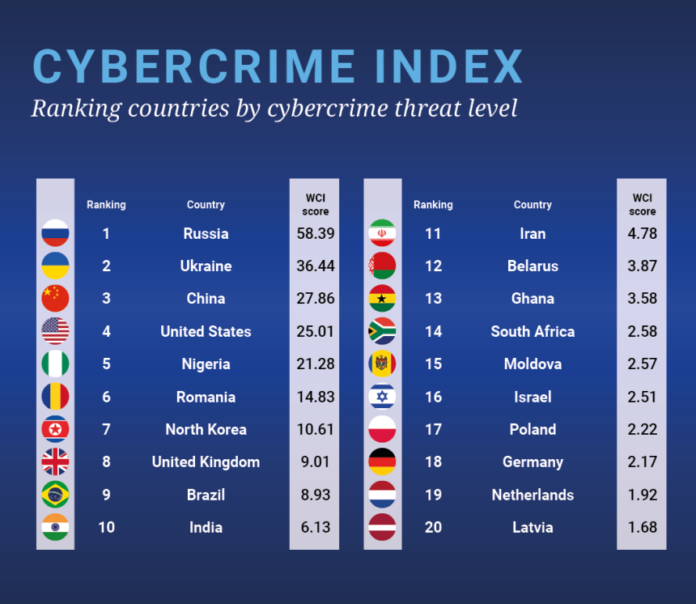Russia tops the list while the Philippines ranks 27th in the first World Cybercrime Index (WCI) compiled by international researchers from Oxford University, to identify the key cybercrime hotspots among 92 countries.
Ukraine, China, the USA and Nigeria are in the top five of the WCI which was a result of three years of intensive research that focused on countries with the most significant sources of cybercrime at a national level.
The report, the first of its kind worldwide, was published on 10 April in the journal PLOS ONE and shows that a relatively small number of countries house the greatest cybercriminal threat.

Despite the surge in cyber attacks and scams in the Philippines, the country only scored 1.24 while Russia scored 47 times more or 58.39 in the WCI. This low score shows that the Philippines is not a cybercrime hotspot.
The Asia Scam Report 2023 published by Gogolook showed that the Philippines had the highest online shopping scam rate of almost 36 percent among 11 Asian countries surveyed.
Co-author of the study, Dr Miranda Bruce from the University of Oxford and UNSW Canberra said the study will enable the public and private sectors to focus their resources on key cybercrime hubs and spend less time and funds on cybercrime countermeasures in countries where the problem is not as significant.
“The research that underpins the Index will help remove the veil of anonymity around cybercriminal offenders, and we hope that it will aid the fight against the growing threat of profit-driven cybercrime,” Dr Bruce said.
“We now have a deeper understanding of the geography of cybercrime, and how different countries specialize in different types of cybercrime.”
The data that underpins the WCI was gathered through a survey of 92 leading cybercrime experts from around the world who are involved in cybercrime intelligence gathering and investigations.
The survey asked the experts to consider five major categories of cybercrime, nominate the countries that they consider to be the most significant sources of each of these types of cybercrime, and then rank each country according to the impact, professionalism, and technical skill of its cybercriminals.
The five major categories of cybercrime assessed by the study were:
1. Technical products/services (e.g. malware coding, botnet access, access to compromised systems, tool production).
2. Attacks and extortion (e.g. denial-of-service attacks, ransomware).
3. Data/identity theft (e.g. hacking, phishing, account compromises, credit card comprises).
4. Scams (e.g. advance fee fraud, business email compromise, online auction fraud).
5. Cashing out/money laundering (e.g. credit card fraud, money mules, illicit virtual currency platforms)







